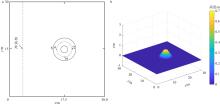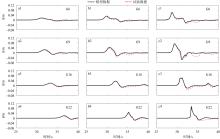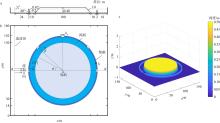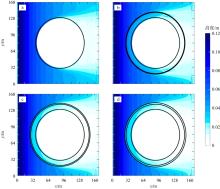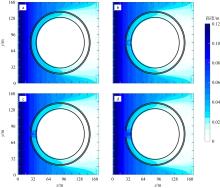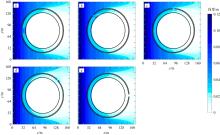| [1] |
刘林平, 刘维杰, 孙志林, 2021. 珊瑚岛礁孤立波爬坡的平面二维数值模拟研究[J]. 海洋工程, 39(4): 96-103.
|
|
LIU LINPING, LIU WEIJIE, SUN ZHILIN, 2021. 2DH numerical study of solitary wave runup around a reef-lined island[J]. The Ocean Engineering, 39(4): 96-103 (in Chinese with English abstract).
|
| [2] |
杨笑笑, 姚宇, 郭辉群, 等, 2021. 礁面大糙率存在下孤立波传播变形及爬高实验研究[J]. 海洋学报, 43(3): 24-30.
|
|
YANG XIAOXIAO, YAO YU, GUO HUIQUN, et al, 2021. Laboratory study of solitary wave transformation and run-up over reefs with large reef roughness[J]. Haiyang Xuebao, 43(3): 24-30 (in Chinese with English abstract).
|
| [3] |
姚宇, 2019. 珊瑚礁海岸水动力学问题研究综述[J]. 水科学进展, 30(1): 139-152.
|
|
YAO YU, 2019. A review of the coral reef hydrodynamics[J]. Advances in Water Science, 30(1): 139-152 (in Chinese with English abstract).
|
| [4] |
姚宇, 蒋昌波, 2023. 珊瑚礁海岸水沙动力学[M]. 北京: 科学出版社 (in Chinese).
|
| [5] |
BRIGGS M J, SYNOLAKIS C E, HARKINS G S, et al, 1995. Laboratory experiments of tsunami runup on a circular island[J]. Pure and Applied Geophysics, 144(3-4): 569-593.
|
| [6] |
CHEN QIN, 2006. Fully nonlinear Boussinesq-type equations for waves and currents over porous beds[J]. Journal of Engineering Mechanics, 132(2): 220-230.
|
| [7] |
GELFENBAUM G, APOTSOS A, STEVENS A W, et al, 2011. Effects of fringing reefs on tsunami inundation: American Samoa[J]. Earth-Science Reviews, 107(1-2): 12-22.
|
| [8] |
KAPLAN E H, 1982. A field guide to coral reefs: Caribbean and Florida[M]. Boston: Houghton Mifflin Harcourt.
|
| [9] |
KENNEDY A B, KIRBY J T, CHEN QIN, et al, 2001. Boussinesq-type equations with improved nonlinear performance[J]. Wave Motion, 33(3): 225-243.
|
| [10] |
LIU WEIJIE, NING YUE, SHI FENGYAN, et al, 2020. A 2DH fully dispersive and weakly nonlinear Boussinesq-type model based on a finite-volume and finite-difference TVD-type scheme[J]. Ocean Modelling, 147: 101559.
|
| [11] |
NING YUE, LIU WEIJIE, SUN ZHILIN, et al, 2019. Parametric study of solitary wave propagation and runup over fringing reefs based on a Boussinesq wave model[J]. Journal of Marine Science and Technology, 24(2): 512-525.
|
| [12] |
QUIROGA P D, CHEUNG K F, 2013. Laboratory study of solitary-wave transformation over bed-form roughness on fringing reefs[J]. Coastal Engineering, 80: 35-48.
|
| [13] |
SHI FENGYAN, KIRBY J T, HARRIS J C, et al, 2012. A high-order adaptive time-stepping TVD solver for Boussinesq modeling of breaking waves and coastal inundation[J]. Ocean Modelling, 43-44: 36-51.
|
| [14] |
TONELLI M, PETTI M, 2009. Hybrid finite volume-finite difference scheme for 2DH improved Boussinesq equations[J]. Coastal Engineering, 56(5-6): 609-620.
|
| [15] |
WEI GE, KIRBY J T, SINHA A, 1999. Generation of waves in Boussinesq models using a source function method[J]. Coastal Engineering, 36(4): 271-299.
|
| [16] |
YAO YU, HE FANG, TANG ZHENGJIANG, et al, 2018. A study of tsunami-like solitary wave transformation and run-up over fringing reefs[J]. Ocean Engineering, 149: 142-155.
|
 ), YAO Yu1,2(
), YAO Yu1,2( ), ZHOU Ting1,2
), ZHOU Ting1,2


